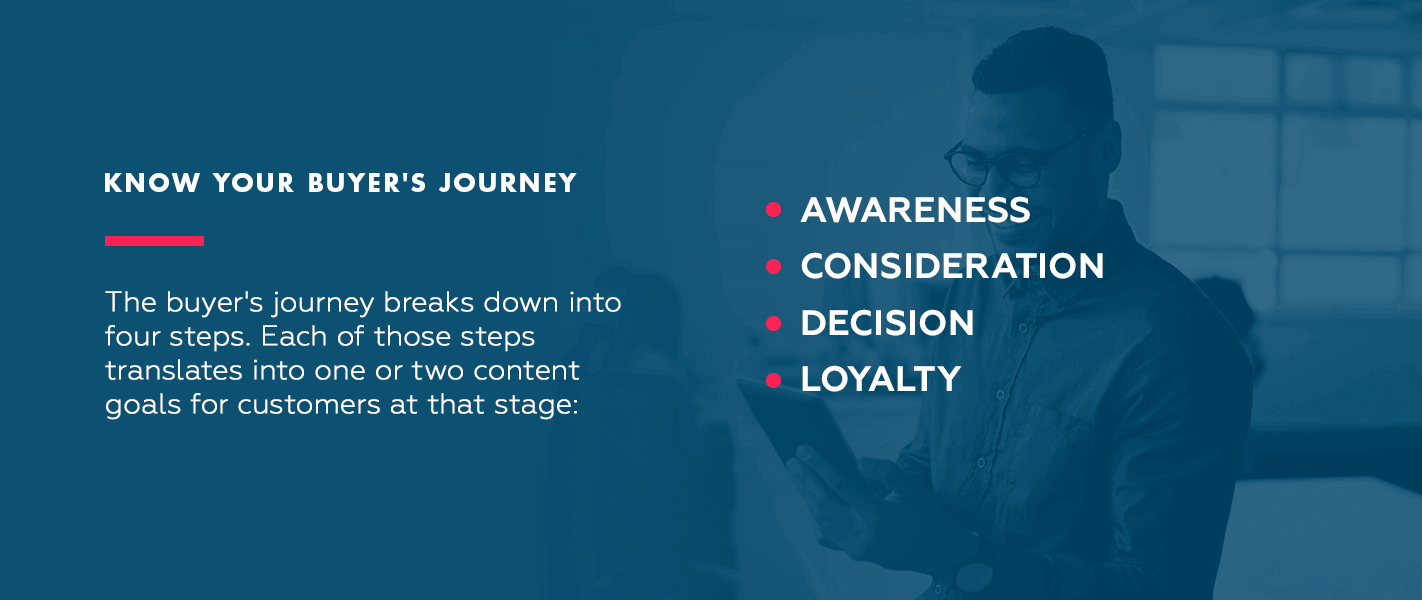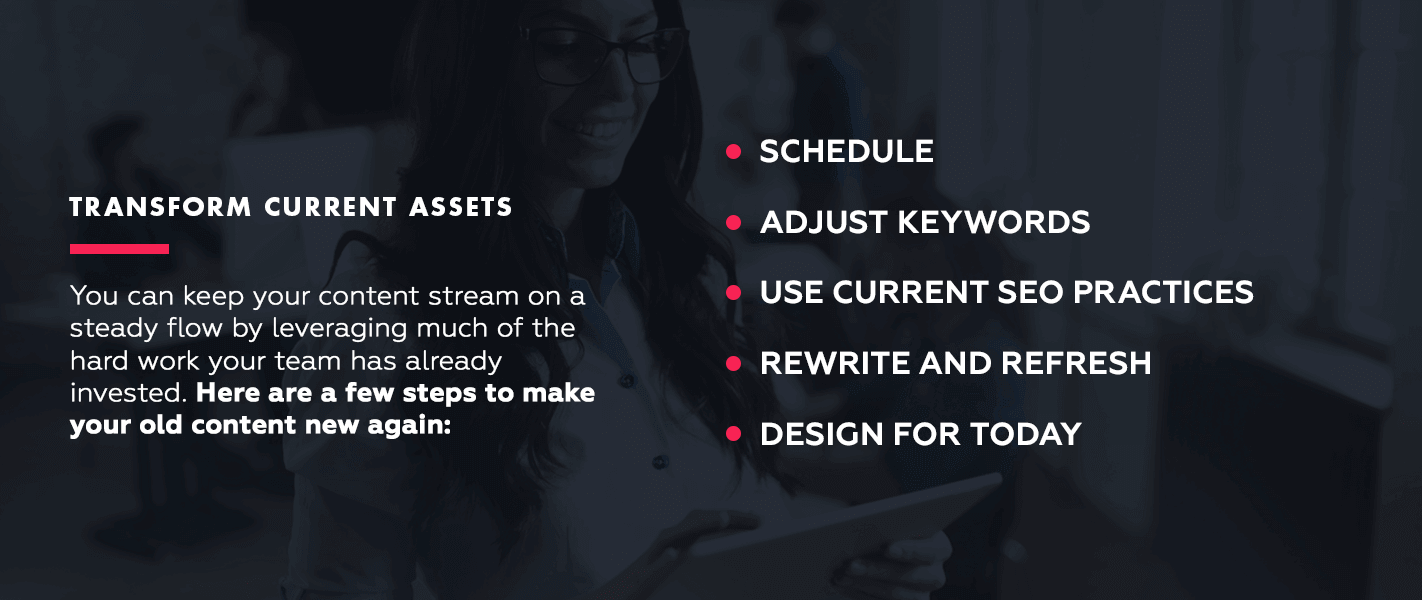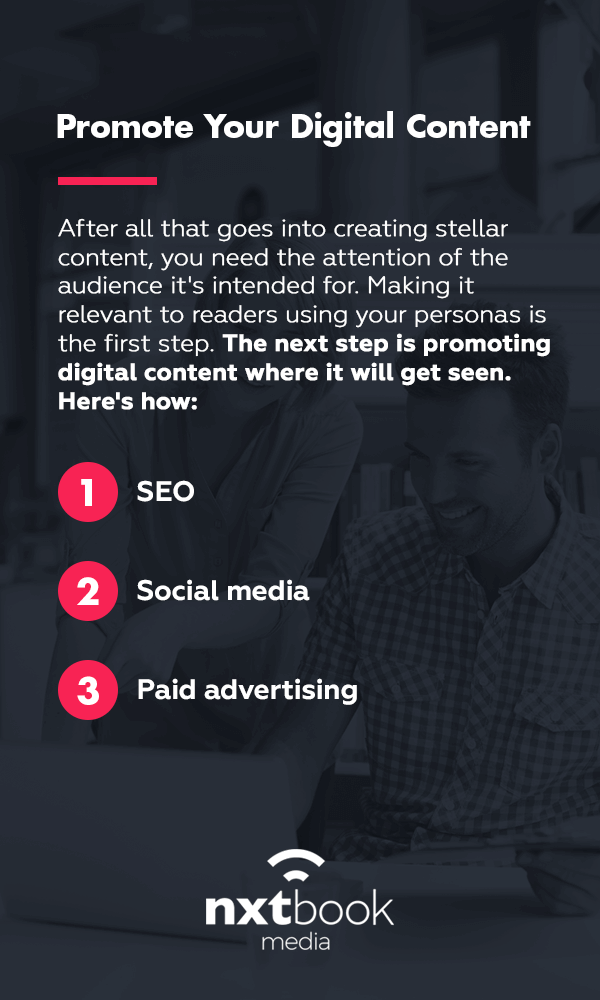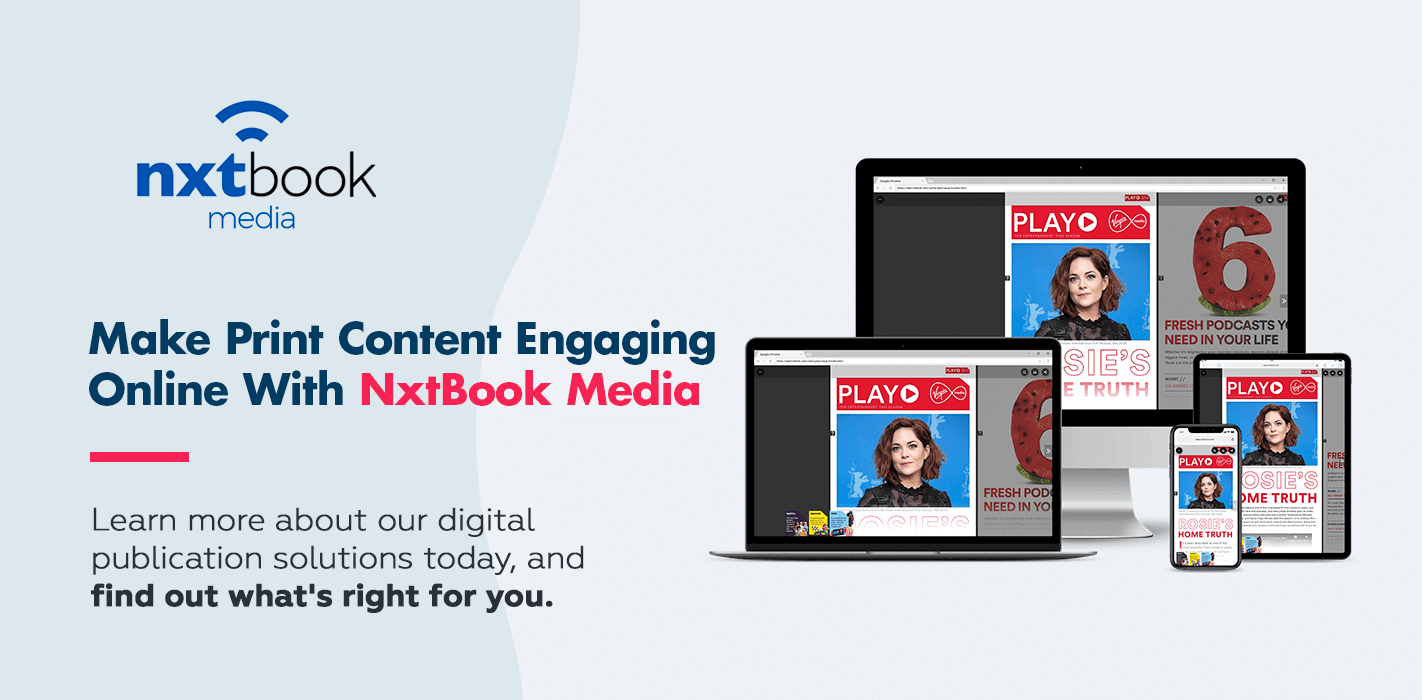Content Creation at Scale

Written by Matt Berringer
September 24, 2020
As a marketer focused on content creation, it’s important to understand the different types of content and digital platforms available, as well as the goals and target audiences for each. By including a variety of video, text, and audio matter on your website, you can compare and contrast the time, tone, and format of each to better understand what works for your brand and product. Additionally, using analytics to highlight industry trends and turning them into guidelines for your content creation can help you stay ahead of the competition and better serve your target market.
Sounds simple, right? We know it is a complicated process and doing this at scale is another problem altogether.
More than half of businesses use content marketing in some form or another. Among the companies that do, most are churning out high-value digital resources at an impressive volume. Among companies with over 5,000 employees, 62% post content daily and another 24% post weekly. For companies like yours, that means one thing — competition is tight. Anyone looking to stand out needs to invest effort and resources into digital content creation.
How can you become a trusted content and media outlet within your industry while staying efficient? We put together this content creation guide to better support your strategy development and implementation.
Learn more about how to create online content at the enterprise level.
- The Importance of Content Creation
- Strategy: Understand Your Content Marketing Goals
- Production: Create an Effective Content Creation Workflow
- Distribution: Scale-Up Promotion
- Analytics: Create a Feedback Loop
- Make Print Content Engaging Online With NxtBook Media
The Importance of Content Creation
Content marketing has the unique ability to connect with your audience compared to other forms of marketing. When done right, content is helpful, entertaining and memorable. It lets you speak to your customers in a friendly, conversational way and often meets them where they are. Since most content aims to tackle a problem your customers are experiencing, you introduce yourself to your target audience in relation to that issue and position yourself as the best solution. When you optimize media for search engines, it arrives in users’ search engine results pages (SERPs) when they’re on the hunt for it.

Content marketers who recognize the value of high-quality content are seeing results. Content is particularly adept at creating brand awareness, with 86% of B2B marketers crediting content marketing for achieving that goal. It can also generate success in many other areas, with 75% of marketers saying it has helped them build credibility and trust for their brands.
Valuable, shareable content can help brands gain traction on social media, and it can also have a direct impact on a company’s SEO efforts. After all, search engines tend to rank sites with a consistent volume of high-quality media in the highest search results positions. Through calls-to-action and gated content, you can also generate leads for your sales teams. This can increase efficiency for your sales team, as your content introduces your products and answers your customers’ pressing questions.
With all the benefits of content marketing, it’s no wonder 34% of B2B marketers planned to increase their content marketing budgets between 1% and 9% in 2020. Another 12% even planned a budget increase of more than 9%.
Strategy: Understand Your Content Creation Marketing Goals
A formal strategy is one of the keys to success in content marketing. According to research from the Content Marketing Institute, 65% of the most successful content marketers have a documented strategy, while only 14% of the least successful marketers do.
Because content marketers juggle many goals, they often try to make each piece of content fit multiple goals. Remember, not all your content needs to speak to all your goals. With hundreds of potential objectives, your job is to pick the few that make sense for your company. You might use your content to:
Become a thought leader in your industry. Educate your audience and show how your products can help. Drive likes, clicks, shares and conversations on social media. Establish authority with Google and rank on SERPs.Earn links from other authoritative creators and industry sites. Introduce your brand, product or service to a new audience. Generate leads and convert your readers.
Here’s how to select the right strategies and goals for your company:
1. Understand Your Market
Your audience probably responds differently to various content formats, whether videos, blogs or digital newsletters. We know that readers are particularly drawn towards e-books and digital editions — the more immersive digital experience provided by the latest digital content platforms gives marketers a 25% boost in unique readership. Audiences also respond differently to different tones of voice, topics, reading levels and types of information. To understand what works for your particular audience and customer segments, you need to look at the evidence.

Your market research should involve studying the trends in your industry and the topics that are getting the most traffic from readers like yours. You’ll also need to analyze your current content to see what is sticking with readers, getting social media buzz or bringing in lots of traffic.
It’s also a good idea to analyze your top competitors. What styles, subjects and formats can you borrow? More importantly, what is missing, and what can you do better? Answering your audience’s burning questions better than or before your competition can turn your brand into a go-to resource in your market.
2. Create an Audience Persona
The advice repeatedly told in the marketing world is to develop content that’s relevant and engaging for your audience. You can’t do that without knowing who your readers are, inside and out. Creators can achieve an audience connection with writing and media that speaks to those people directly. You need to think about and talk to your audience as if they were real people — which they are.
You can do this more effectively by creating a detailed overall audience persona or one for each segment. This fictional representation of your ideal reader makes it easier to speak to them directly and look at your content through your customer’s eyes. After engaging in thorough market research, you can compile audience data that includes geography, age, language, pain points and spending habits. In the B2B sphere, this data may also include jobs, size of business and decision-making power.
Take this data and build out a profile for an individual, and include as many relevant details as you can. What do your personas like to do for fun? What does their life look like? What social media platforms do they use? Give them a name and a personality. The more specific you can get, the easier it can be to create content geared toward a real person rather than a faceless crowd. After creating your audience persona, consider how that person is likely to view your content — probably on a mobile device — and what they want to read about to build goals around your personas.
3. Know Your Buyer’s Journey
Wouldn’t it be great if every visitor signed up for a trial — or better yet, bought your services — from the moment they laid eyes on your website? If that were the case, your content strategy wouldn’t matter much at all. Your customers have a big decision to make, and it takes time.
When the right people buy your products and services, you can have more raving fans and fewer dissatisfied customers. Since 57% of the purchase decision happens before a customer calls the sales rep, your digital assets are guiding that decision. Among the most successful content marketers, 74% craft content based on the customer journey stages. Only 26% of the least successful marketers do so.

Understanding the buyer’s journey in your market lets you make engaging content for each stage. The buyer’s journey breaks down into four steps. Each of those steps translates into one or two content goals for customers at that stage:
- Awareness: When customers first realize they have a problem, they begin their hunt for a solution. In this stage, they start researching the issue itself. Your goal is to pop up during the awareness phase. Aim to find those customers and help them find you, and attract them to your brand and content. This material needs to be SEO-friendly and highly targeted. Some of the best awareness stage formats include blog posts, educational content and e-books.
- Consideration: Next, your customer begins considering several options, including your competitors. They compare prices and may visit your website to continue learning more about your solutions. At this stage, the goal is to engage your audience. Content that does well here includes comparison posts, case studies, podcasts and videos. The topics and information should highlight what makes you different, better or more complete, even if you don’t mention your competitors.
- Decision: Now, the customer is ready to make a choice. They know what type of solution they need and are prepared to compare apples to apples. In the B2B marketing world, they might also be gathering evidence about their preferred vendor to discuss with a final decision-maker. At this stage, the goal is to convert. Content needs to have a specific call to action, encouraging readers to call or fill out a form. This call to action can highlight your brand through product comparisons, demos, testimonials and case studies.
- Loyalty: Once your customers convert, you must retain them and continue engaging with them. Content should highlight how to continue getting the most value out of your products. You could put out user guides, feature or service spotlights, product updates or new launches, FAQs and newsletters.
Production: Create an Effective Content Creation Workflow
With your new goals established, the next step is to create content and do so consistently. Content creation at scale usually involves publishing many high-quality articles, whitepapers, podcasts, videos and newsletters each month. It also brings many teammates into the fold, from your content strategists, writers, designers, subject matter experts, and, in some cases, audio and video editors.

A typical content creation workflow may involve many tasks, like:
Outlining, Writing, Designing, Filming or Recording, Reviewing, Editing, Approving, Publishing
Creating the workflow that’s right for your team starts with breaking down the tasks required and assigning responsibilities. If you can standardize that workflow, you can produce content faster knowing everyone involved knows what to do, how to do it and when to do it.
1. Create Content Guidelines
Because a full-scale content marketing strategy will involve many people, you need rules so all language and visuals follow a similar style. Writers, designers and editors need a content creation guide they can turn to for things like word choice or color schemes. Using brand guidelines, you ensure all assets have a similar look, feel and voice. That style lets readers instantly recognize your content.

In the writing section, your guidelines should discuss style, formatting, tone and voice. Even small things like whether to use numerical or spelled-out numbers can ensure your content is consistent and user-friendly. Pay careful attention to your tone and voice. It could be technical and professional, conversational and playful or anything between.
In the visual guidelines, you’ll lay out approved colors, logo usage, fonts and formats. You may have approved layouts for digital magazines or infographics. Include the exact color codes for both print and digital design, and include rules for color usage. Highlight approved and unapproved uses of the logo and fonts for headings and body text.
2. Build a Flexible Calendar
Among the many reasons to use a content calendar, the main one is the ability to organize the articles, social media posts and publications you have on the docket. You can zoom out and see how your posts relate to one another and reschedule publication dates to line up with current events, holidays or trends as needed. You can also align your best content to go live when your audience is most engaged, based on your analytics.
Your monthly or weekly lineup will likely have several types of content, appearing with varying frequency. You might have a few very well-developed series surrounding a particular theme, which you publish about twice a month. They could be podcasts, videos, digital magazines or white papers. You also may have a few special reports or content that appears once a quarter or once a year. This is a great time to highlight original research and can be something your audience looks forward to as part of their annual or quarterly planning.
Populate the rest of your calendar with regularly scheduled content, which can vary in theme more than the other content types. These are often blogs and social media posts and speak to just one audience at a time. Depending on your company, this content will go live daily, several times a week or even several times a day.
However you schedule your content, inform it with analytics. Use platforms with third-party analytics to understand how your schedule is working. Use the data from last month’s calendar to tweak your upcoming content schedule.
3. Transform Current Assets
You probably know that Google and other search engines love fresh content. But following a rigorous content calendar where new media goes live weekly or daily certainly means a lot of work. The good news is that all your old, outdated assets can become fresh, relevant ideas. You can keep your content stream on a steady flow by leveraging much of the hard work your team has already invested.

Here are a few steps to make your old content new again:
- Schedule: Decide when is the best time to publish updates for specific posts and add those times to your content calendar.
- Adjust keywords: Review your SEO keyword rankings, update content with relevant keywords and remove outdated keyword insertions.
- Use current SEO practices: With search engines constantly releasing new updates that affect rankings, even pages a few years old may use outdated SEO. Be sure to format headers for H1, H2 and H3 styles, and add image titles and alt text alongside SEO titles and meta tags.
- Rewrite and refresh: When refreshing content, first take out suggestions that don’t reflect current industry best practices. Replace links with up-to-date sources and remove stale pop culture references. Add new advice where applicable. Don’t forget to change the date to show the content is recent.
- Design for today: Your audience can tell pretty quickly if your content looks old. A clean, simple structure with crisp images and interactive elements can give your material a much-needed face-lift. It’s also vital to have a mobile-friendly, responsive design that automatically adjusts content for the size of the screen being used.
One simple way to give your content a brand new look is to turn old assets into a more engaging format, using PageRaft.
4. Expand Internal Communication
Content at scale requires many types of expertise, both in-house and out-of-house. On your internal side, you’ll need at least one person calling the shots — a managing editor or an editorial director. This role involves outlining and strategizing content and assigning resources to get it done. You may also have some internal copywriters the head editor will be responsible for managing and communicating with.
As part of your internal communication, it’s crucial to loop in your subject matter experts (SMEs). Not everyone writing your content will have a strong knowledge of your industry, and that’s okay. You need them to be expert wordsmiths who can slip into your brand’s tone of voice, vary their sentence structure and insert keywords naturally. Your internal team members who live and breathe your industry, whether they’re product developers or serving customers out in the field, can provide the insights. An editor can conduct interviews or commission ghostwriters for your SMEs, or run posts by them for accuracy checks.
5. Streamline External Communication
Your managing editor and internal writers likely won’t have time to create content at the scale and speed you need. That’s where a roster of freelancers may come in. You might also want to invite industry contacts and influencers to write guest posts. These resources should free up your internal team to produce the volume of content needed. Your managing editor, or someone on your internal team, will need to have practical communication skills to wrangle these contributors, ensure outlines get followed and check that industry information is accurate.

Distribution: Scale-Up Promotion
Once you have materials approved and ready to publish, you need to decide how to get them seen. Scaling up promotion may mean using several channels and working with others in the industry to get your content in front of new prospects. Using SEO best practices can help your content get found by those in the research process. Posting on social media can get the word out to your raving fans. Getting the attention of influencers on their social channels can also give you an audience with their raving fans.
1. Promote Your Digital Content
After all that goes into creating stellar content, you need the attention of the audience it’s intended for. Making it relevant to readers using your personas is the first step. The next step is promoting digital content where it will get seen. Here’s how:
- SEO: When you end up on the first page of search results, users find you. Better yet, your customers find you during their research process. Effective SEO for your digital content includes using the right site and content platforms. You must use keywords naturally and optimize your pages to let search engines understand them.
- Social media: Social media marketing is a field of its own. An effective social media channel will often do more than promote itself. It needs to offer value, which might include outside resources and bite-sized bits of advice your readers won’t catch on the blog. Pick the channels that speak to your audience, rather than trying to do something on every platform.
- Paid advertising: On social media and search engines, paid advertising can show up in your audience’s feeds and SERPs. In both cases, you need to use precise targeting to ensure you’re paying to get in front of the right viewers. On social media, you’ll need to design more visuals to make your ad attractive.
2. Understand Your Platforms
With all the social media platforms and other channels for distributing digital content, it’s crucial to choose the ones that will have the highest impact. You’ll find hundreds of marketing platforms out there, each for different purposes. Some will suggest relevant articles to your target audience on your sites and around the web.
Others, like social media, allow you to build an audience on a platform they already use and direct them to your content. It’s crucial to research your audience and the platforms out there to find the right ones for you. Then, make sure you’re using the best practices for that platform.
Every platform and distribution channel has pros and cons, and you’ll probably use some combination to highlight your content for different personas and goals. One avenue for digital content platform marketing that delivers proven results is our immersive, responsive digital publishing platform, PageRaft. We’ve seen our digital magazines published through PageRaft get 19,000 views on Facebook and other social media because it delivers such an engaging experience. Unlike a magazine website, it provides a bundled content viewer to engage your readers for seven minutes per session.
Analytics: Create a Feedback Loop
Once your content reaches and engages your audience, you need to track its performance. Did your blog drive more leads and encourage them to explore your site more? Did people find it on social media or through search results? The way your publications perform should inform your future content decisions, so you can continue to grow your audience of loyal fans.
1. Update Content Guidelines
One mistake some companies make is to “set and forget” their content branding guidelines. While it’s important to maintain brand consistency, your content should also evolve with current trends and analytics.
If you find certain headlines drive more clicks than others, you can include headline rules in your guidelines. Likewise, your industry may stop using one term in favor of a new one. You can add the outdated buzzword to a “do not use” list and include the preferred replacement. Your content guidelines may need updates for new products and audiences or brand positioning.
Plan to update your content guidelines at least once a year, and ensure your whole team uses the latest version. As you plan to update your brand guidelines, gather feedback and data about your brand perception and content performance. You can also use A/B testing to refine your unique style.
2. Know What Works: Tracking and Analytics
In digital marketing, your channels and platforms give you a wealth of information about your audience. Undoubtedly, you need to track your analytics to learn what is and isn’t working. The question is, which metrics should you pay attention to? Treating every number equally and watching every spike and dip won’t necessarily drive better content and could take more time than it’s worth.

When tracking digital content, select the metrics that align with your goals and offer the best indications of success. Top brands prioritize time spent engaged as their performance indicator, and many secondary metrics can fit your marketing objectives, such as:
- Reach: When evaluating the success of content platforms, you can use reach-related metrics. These analytics tell you how many users saw your content, letting you know if an outlet is giving you a solid ROI or if you need to adjust your strategy.
- Engagement: Engagement can track anything from the number of clicks to site dwell time to social media shares. These numbers tell you if your content is connecting with the right audience.
- Search engine rankings: How many keywords your content ranks for and the SERP positions let you gauge your SEO strategy’s effectiveness.
- Conversions: Is your content pushing visitors to sign up, reach out or buy? Numbers related to your lead generation and sales help you optimize your content for conversions.
Make Print Content Engaging Online With NxtBook Media
Looking for a hosting and design solution to help you stand out from the crowd? Try PageRaft. It’s a unique digital content hosting platform to make your media immersive, sophisticated and engaging. We let you design — or will design for you — awesome content in a bundled digital publication format that will draw in users for longer than websites or PDFs. Many of your competitors use flat, unresponsive PDFs as their preferred format for gated content, original reports and white papers. Make your content interactive and visually stunning with PageRaft.
You’ll enhance your customer experience, showcase your brand in a professional, digital-friendly way on both websites and social media, and generate more leads along the way. We also offer trusted third-party analytics, so your marketing team can bypass PDF metrics and gain more insights into your audience. For all your paper marketing collateral that needs to go digital, we also offer a simple print to digital content software, nxtbook4.
Learn more about our digital publication solutions today, and find out what’s right for you.
